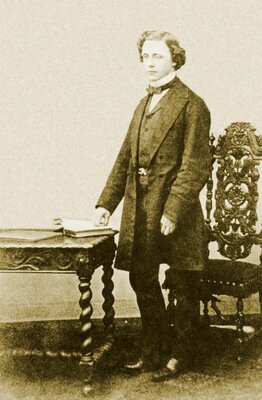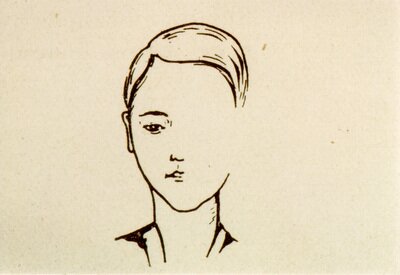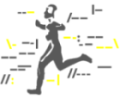





Search | Sitemap | Navigation |  |
|
||||||||||||||||||||||||||
|
||||||||||||||||||||||||||
|
||||||||||||||||||||||||||
|
| Margaret Cho |
Charles L. Dodgson a.k.a. Lewis Carroll (1832-1898)
The Lewis Carroll Society

Portrait of Lewis Carroll, c. 1865. © 2004 The Trustees of the Charles L. Dodgson Estate (http://www.incompetech.com/authors/carroll/, October 6, 2004)
Migraine hallucinations said may have inspired 'Alice' tales
NEW YORK, April 24, 1999 (Reuters Health) - Migraine-related hallucinations may have inspired the surreal, imaginary world of Lewis Carroll's "Alice's Adventures in Wonderland," according to researchers.
New evidence supports "the thesis that at least some of Alice's adventures were based on Carroll's personal migraine aura perceptions," according to Dr. Klaus Podoll of the University of Technology in Aachen and co-author Derek Robinson of Cox Green, in England. Their findings were published last Saturday [April 17, 1999] in The Lancet.
Carroll first noted the appearance of migraine hallucinations in an 1885 diary entry, where he wrote that he had "experienced, for the second time, that odd optical affection of seeing moving fortifications, followed by a headache." Because this phenomenon appears to have only happened once before, and because the 'Alice' books were published in 1864-1865, most experts had discounted the theory that the works were based on the often bizarre 'dreamscapes' of migraine hallucinations.
However, Podoll and Robinson believe they have found "two pieces of evidence" that might change experts' views.

Frontispiece of Lewis Carroll's 'Mischmasch' (1855-1862).
They first cite a sketch produced by Carroll sometime between 1855-1862. The sketch is dominated by an elf-like figure "meticulously drawn except for the fact that that he is missing the right side of his face, as well as portions of his right shoulder, wrist and hand".

Negative scotoma drawn by a migraine sufferer from Garcin and Halbron (1934).
This odd omission appears to suggest a "rounded border defect... similar to that seen in a negative scotoma," according to the researchers. Negative scotomas, where patients cannot see objects that fall on certain parts of the retina, can occur in migraine auras.
The second piece of evidence involves a diary entry from January 1856, when Carroll wrote, "Consulted Mr. Bowman, the oculist, about my right eye: he does not seem to think anything can be done to remedy it, but recommends me not to read long at a time...." Podoll and Robinson speculate that the author consulted Bowman to find a cause and treatment for the negative scotoma that produced the defective drawing.
Both the drawing and the diary entry suggest that Carroll experienced migraine hallucinations (probably without accompanying headache) in the years leading up to his creation of "Alice's Adventures Underground" and "Alice's Adventures in Wonderland." The recurrence of increasingly familiar hallucinations over time might "explain the otherwise inexplicable similarities between the experiences described in the two Alice books," the researchers conclude.
SOURCE: The Lancet 1999; 353:1366. © 1999, 2005 Reuters News (http://www.alice-in-wonderland.net/?explain/alice864.html, October 12, 2004)
References
Garcin R, Halbron P. Contribution à l'étude des migraines accompagnées et en particulier de la physiopathologie des migraines ophtalmiques accompagnées. Ann méd 1934; 36: 81-114.
Larner AJ. Lewis Carroll's Humpty Dumpty: an early report of prosopagnosia? J Neurol Neurosurg Psychiatry 2004; 75: 1063.
Lippman CW. Certain hallucinations peculiar to migraine. J Nerv Ment Dis 1952; 116: 346-351.
Murray TJ. The neurology of Alice in Wonderland. Can J Neurol Sci 1982; 9: 453-457.
Todd J. The syndrome of Alice in Wonderland. Can Med Assoc J 1955; 73: 701-704.
Podoll K, Robinson D. Lewis Carroll's migraine experiences. Lancet 1999; 353: 1366.
Podoll K, Robinson D. Splitting of the body image as somesthetic aura symptom in migraine. Cephalalgia 2002; 22: 62-65.
van Vugt P. Migraine and inspiration. C.L. Dodgson's migraine and Lewis Carroll's literary inspiration: a neurolinguistic perspective. Humanising Language Teaching 2004; 6 (no. 4): ...-...
Author: Klaus Podoll
Last modification of this page: Wednesday March 16. 2005
| Margaret Cho |
 Top of the page
Top of the page| · | News |
| · | Medical Professionals |
| · | Medical Studies |
| · | Body image disturbances |
Copyright © 2005 Migraine Aura Foundation, All rights reserved. Last modification of this site: August 25, 2006
Thanks to: RAFFELT MEDIENDESIGN and GNU software | webmaster@migraine-aura.org
http://migraine-aura.org/EN/Lewis_Carroll.html


